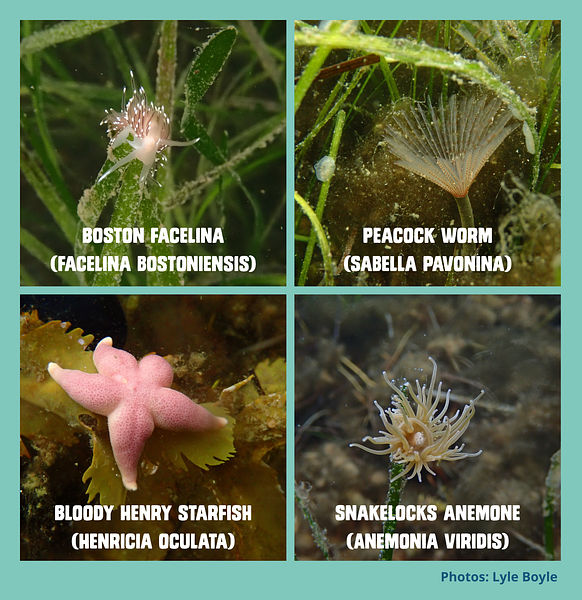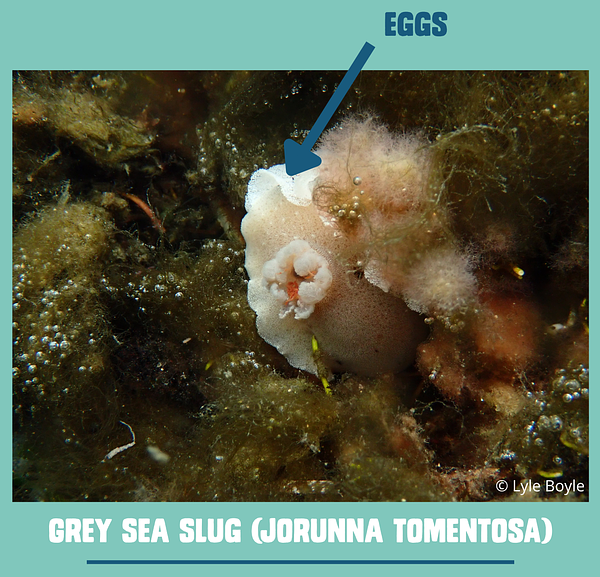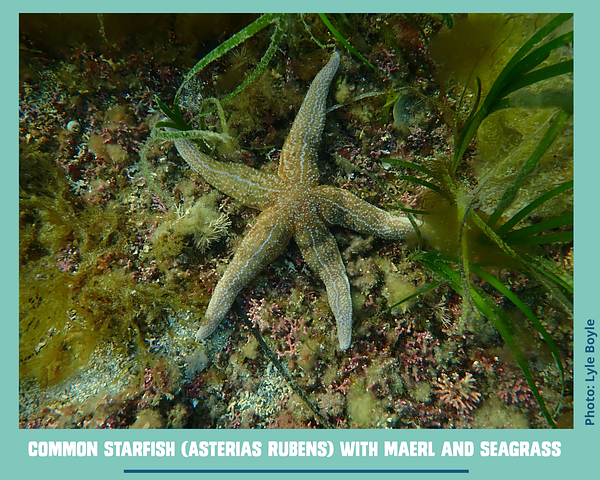.png)
Exploring Orkney’s Underwater Mosaics
Our latest trip to Orkney brought together science, community, and discovery — from monitoring seagrass meadows and sharing snorkels with locals, to inspiration carried back home to the Forth.
By Eleri Williams, Restoration Officer
A familiar sight: shimmering rays of light reflecting between the seagrass blades, green crabs scuttle along the sandy bottom and a school of juvenile pollock drift alongside us. The Restoration Forth team has been lucky to experience the magic of Orcadian seagrass meadows for the past three years, and this year was every bit as special.
Orkney has become a home away from home for the project. Local communities have welcomed us into their waters, stopped by our stalls for a chat, and joined us on community snorkels. These meadows have also played a vital role in restoration trials back in the Firth of Forth, providing seeds that helped kickstart our work. This July, we returned not only to monitor the meadows we once collected seeds from, but also to soak up the energy of Stromness Shopping Week and share the joy of snorkelling with locals.
These sessions have quickly become a highlight of our work in Orkney: meeting like-minded individuals who are keen to spend time in the water, spotting the variety of species amongst the seagrass and of course enjoying a post-snorkel cup of tea together. My colleague Lyle was able to capture some of the species we spotted during these snorkels - from delicate peacock worms to colourful nudibranchs, and even the occasional European eel.

Seagrass meadows are known as nurseries of the sea, sheltering young marine life in their shifting blades. On this trip, we were thrilled to see nudibranchs laying eggs, neat spirals of ribbon-like clusters that can hold up to 145,000 eggs (Thompson & Brown, 1984). A tiny reminder of just how much life depends on these underwater meadows.

Orkney’s shores host a rich mix of marine habitats, including maerl, seagrass, and kelp. Maerl beds are less common than seagrass and kelp, but their composition of purple-pink coralline algae makes them a distinctive sight. While each habitat is beautiful on its own, the team were thrilled to snorkel over a site where all three intertwined, alive with marine creatures. These habitats aren’t just beautiful - they’re also recognised as Priority Marine Features in Scotland, a reminder of their vital role in the health of our seas.
Our time in Orkney has reinforced just how important these meadows are - both as thriving habitats and as places for people to connect with the ocean. The knowledge gained through our work in Orkney’s seagrass meadows continues to provide valuable data and perspective that guide our wider work with communities in the Forth. The meadows never fail to surprise us with their diversity and beauty, reminding us why protecting them and encouraging their recovery is so essential.

The Scottish Seabird Centre is a proud partner of this WWF-UK led project that brings together expertise from a range of partner organisations including Project Seagrass, Heriot-Watt University, the Marine Conservation Society, the Ecology Centre, Fife Coast and Countryside Trust, Edinburgh Shoreline and Heart of Newhaven Community.
The first phase of Restoration Forth (2022-24) was made possible by funding from Aviva, the Moondance Foundation, the ScottishPower Foundation and the Scottish Government’s Nature Restoration Fund, facilitated by the Scottish Marine Environmental Enhancement Fund, and managed by NatureScot.
The current phase of Restoration Forth is made possible by funding from Sky and the Cinven Foundation; the project is supported by the Scottish Government’s Nature Restoration Fund, managed by NatureScot.
